Hulu recently made available all seven seasons (163 episodes) of Designing Women, the critically-lauded, occasionally scandalous sitcom that ran on CBS from 1986 to 1993. The show held many similarities to NBC's 1985-1992 hit Golden Girls, notably a premise that centered around four women, each one an archetype (outspoken, sensible, slutty, naive). Both shows also resonated with gay audiences, with the Atlanta-set Designing Women especially striking a chord with Southern queers.
While both TV shows have remained in the public's consciousness since being canceled, The Golden Girls has ascended to near cultural immortality, with its Emmy-winning stars lionized and repeats running constantly on basic cable. Designing Women hasn't entirely faded from memory, but it's not nearly as fondly recalled. Is it just because The Golden Girls had the novelty of featuring actresses in their 50s and 60s, while Designing Women centered on younger, shiny-haired white women, the kind featured on every other TV show in the 1980s and early '90s?
Well, not entirely. While Bea Arthur's departure led to the end of The Golden Girls, up until then the cast was static, while Designing Women added and lost actors throughout its run. By season six of Designing Women, the show's biggest star, Delta Burke, was out after clashing with the show's producers. Burke's replacement, actress Julia Duffy (who would go on to play Jonathan Groff's mother on Looking), was canned after one season.
The revolving door, and regular schedule-shifting of CBS, didn't exactly lead to better quality or a more devoted audience. But Designing Women always benefited from a keen feminist spirit that was blazed by show creator Linda Bloodworth-Thomason (known to many as a close friend of Bill and Hillary Clinton). The liberal-minded speeches of Julia Sugarbaker were delivered with pitch-perfect -- some might say drag-a-licious -- delivery by star Dixie Carter. Every gay who ever kicked up their heels at an Oilcan Harry's can recite Julia's famous "Night the Lights Went Out in Georgia" speech. While that ferocious tell-off of a nasty beauty queen was delicious for its bitchiness, it was also sweet; Julia was defending her little sister, Burke's Suzanne.
When it came to tackling the issue of HIV, Designing Women may have actually bested Golden Girls. While the latter show featured a memorable 1990 episode where Betty White's Rose fears she may have contracted the disease through a blood transfusion, Designing Women covered the subject three years earlier, with an actual gay character in harm's way. Tony Goldwyn plays a young man asking the women, who run an interior design firm, to arrange his funeral. It's a heartbreaking episode, but also one where a cruel client of the ladies announces that "this disease has one thing going for it, it's killing all the right people." Julia sure set her straight, so to speak.
That wouldn't be the first time the show battled homophobia. A later episode featured Suzanne reuniting with an old pageant friend, who it turns out, is a lesbian. While Suzanne frets over the news, her sister and co-workers admonish her homophobia, telling her, "It's the '90s." As Matt Baume pointed out, Suzanne is the outlier, not the lesbian character or the straight characters who embrace her -- and, of course, Suzanne eventually comes around. But as Baume also recalls, The Golden Girls had a very similar episode, but years earlier. A woman falls in love with Rose, and in the process, Rose and Rue McClanahan's Blanche grasp that queer women aren't scary or strange.
While the pilot of The Golden Girls featured a gay private chef and later episodes brought in other LGBTQ characters, including Blanche's brother (who actually got "married" to his partner, in the '80s), Designing Women had the handy-man character of Anthony, played by Meshach Taylor (the campy window dresser in the Mannequin movie). As Dave White writes, Anthony was an enigma -- seemingly the gay best friend, but also presumed straight by the female characters. Or maybe he was just a gay-acting straight man? The show could have made history by having the sexually ambiguous Anthony come out, but a gay black character was probably never going to fly on the Tiffany Network of the early 1990s.
Designing Women did benefit from having a black voice among its white ones, and Suzanne was schooled on the evils of blackface by Anthony and her more sophisticated sister. But race was also played for laughs on the Southern-set comedy, with Suzanne proclaiming in an early episode that her mother was a civil rights leader because she was attracted to Harry Belafonte. The pilot also featured a cringe-worthy line where Julia declares, "There's nothing I hate worse than a prissy man." She was responding to the description of a straight guy who got hairplugs and a fake tan, but it still sounded homophobic as hell.
The Golden Girls also joked about gays (remember when Blanche's brother said "he'd bend over backwards" for his lover?) and People of Color were limited to guest shots by people like Mario Lopez, but rarely did the ladies of Miami ever come across as mean-spirited. Rose, Blanche, Dorothy, and Sophia had an inherent kindness (not always to each other) that made the world fall in love with them, while Julia, Suzanne, Charlene, and Mary Jo could be cruel and petty at times.
For many reasons, Designing Women will never live in the same revered space as The Golden Girls, but it doesn't mean it's not worth your time. If for nothing else, Designing Women helped set the stage for future shows centered around independent, working women. One specific series it helped inspire comes to mind -- transport these characters to New York City, add cocktails and nudity, and you have Sex and the City. For all its faults, Designing Women has definitely aged better than that show.
Neal Broverman is the executive editor of The Advocate. Follow him on Twitter @nbroverman.













































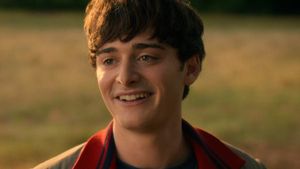




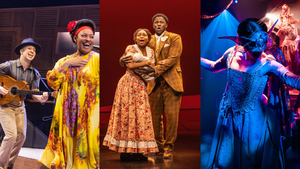




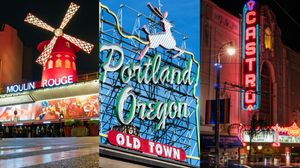

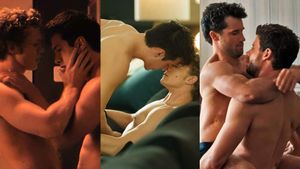


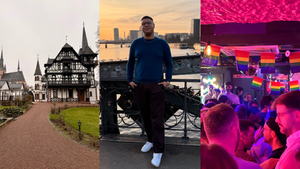








Charlie Kirk DID say stoning gay people was the 'perfect law' — and these other heinous quotes